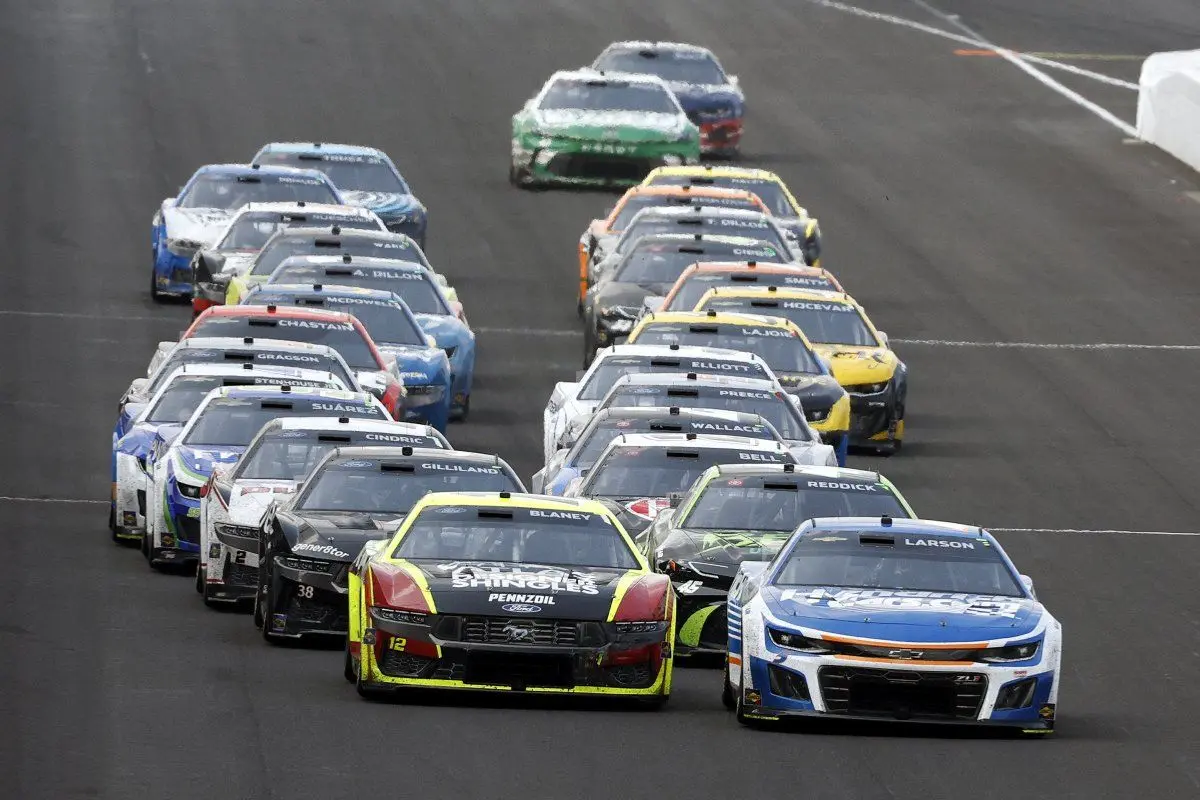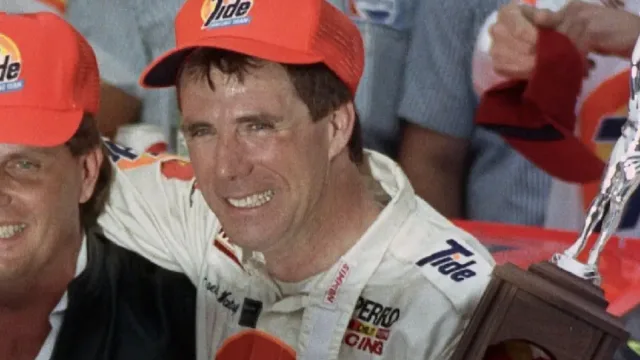Darrell Waltrip recalls the tragic moment that changed everything during the 2001 Daytona 500. As the final lap unfolded, excitement quickly turned into heartbreak. What was supposed to be a historic victory for his brother Michael Waltrip ended in the unthinkable loss of NASCAR legend Dale Earnhardt Sr. The emotions ran deep, and the impact on the sport was felt instantly.
Key Highlights
- Darrell Waltrip experienced a mix of joy for his brother’s win and heartbreak over Dale Earnhardt Sr.’s accident.
- The emotional shift from celebration to mourning occurred during the final lap of the Daytona 500.
- Waltrip’s reflections highlight the intense emotional impact and personal toll of the tragic event.
- Earnhardt’s accident deeply affected the NASCAR community, leaving a lasting legacy of safety improvements.
- The 2001 Daytona 500 is remembered for its emotional complexity and its influence on NASCAR safety reforms.
Darrell Waltrip’s Emotional Reflection on the 2001 Daytona 500
How does one encapsulate the emotional complexity of witnessing both victory and tragedy within a single moment? For Darrell Waltrip, the 2001 Daytona 500 was a profound convergence of such extremes. As he watched from the commentator’s booth, he was met with a unique contrast: the elation of his brother Michael Waltrip’s initial NASCAR victory contrasted sharply with the devastating loss of his friend and rival, Dale Earnhardt Sr. The race, which unfolded with the suspense and thrill characteristic of Daytona, took an irrevocable turn on its last lap, forever altering the emotional landscape for those involved.
Darrell Waltrip’s reflection on this moment, shared during a 2012 interview, reveals the depth of this emotional roller coaster. He described the sequence of events with palpable poignancy. Initially buoyed by the success of his brother, his joy was palpable, envisioning a celebratory journey to Victory Circle.
However, that anticipation was abruptly overshadowed by the grim news of Earnhardt’s accident. The description of his friend Andy, a deputy sheriff, meeting him with tears and the grave nod of acknowledgment, signified a shift from success to tragedy.
In the vivid recounting, Waltrip’s voice resonates with the weight of history, capturing the raw and unfiltered nature of human experience in the face of unexpected loss. His narrative serves as an indication of the unforeseen duality of life, where joy and sorrow often coexist, revealing the complex emotional tapestry woven into the fabric of NASCAR’s most storied events.

The Immediate Aftermath of Dale Earnhardt’s Tragic Passing
In the immediate aftermath of Dale Earnhardt‘s tragic passing, the atmosphere was one of collective shock and disbelief. As the final lap of the Daytona 500 came to its heartbreaking end, the celebration of Michael Waltrip’s victory was painfully eclipsed by a somber cloud of uncertainty and dread.
Darrell Waltrip, who had been overjoyed moments earlier, found himself in a hospital, feeling stunned. The contrast of joy and sorrow encapsulated the complexity of emotions experienced by everyone present.
Friends, family, and NASCAR officials gathered at the hospital, each grappling with the harsh reality of the situation. The legendary Dale Earnhardt, a figure synonymous with the sport’s indomitable spirit, was now the subject of whispers and worried glances.
The weight of the moment was palpable, as Darrell Waltrip recounted, describing the scene as one marked by muted conversations and a pervasive sense of disbelief. This collective emotional response highlighted how deeply Earnhardt’s presence and legacy were interwoven into the fabric of NASCAR.
“It’s 11 years ago, and even today, I see that and I think about that moment in time, I could shed tears. It was tragic. One moment I’m excited for my brother. I’m going to victory circle with my brother. And the next minute I turn around and a friend of mine, Andy, was standing at the top of the steps with tears down his face. Big man.”
“Deputy sheriff in Daytona. And he’s shaking his head. I say, ‘I’m going to Victory Circle.’ He’s going to take me. ‘What’s wrong?’ He’s shaking his head and crying. He said we got to go to the hospital. He said, ‘I don’t think Dale made it.’ It was the biggest and most emotional roller coaster I had been on in my life.” – Darrell Waltrip
For Darrell Waltrip, the experience was so profoundly jarring that he admitted to having blocked certain memories from that day, describing the incident as simply ‘devastating.’ This admission emphasizes the psychological toll of such a sudden and tragic loss, affecting not just the immediate circle of family and friends but also the broader NASCAR community.
NASCAR’s Safety Revolution After Dale Earnhardt’s Death
The tragic loss of Dale Earnhardt Sr. at the Daytona 500 marked a turning point in NASCAR’s approach to safety. His passing on that fateful day in 2001 was not only a heartbreaking moment for fans and competitors similarly but also a catalyst for revolutionary changes within the sport. Earnhardt’s death emphasized the urgent need for improved safety measures, prompting NASCAR to initiate an extensive safety revolution.
Central to this transformation was the mandatory introduction of the Head and Neck Support (HANS) device, a critical innovation in driver protection. This device was designed to prevent the type of basal skull fracture that claimed Earnhardt’s life, ensuring that drivers’ heads and necks remained secure during high-impact collisions.
In addition to the HANS device, NASCAR implemented SAFER (Steel and Foam Energy Reduction) barriers at all oval tracks by 2005, attenuating the force of crashes and markedly reducing the risk of injury.
Further improvements extended to different aspects of car safety, including advancements in the safety belt harness system and sophisticated fire extinguishing systems within racecars. These measures were not merely incremental changes; they represented a fundamental shift in NASCAR’s prioritization of driver safety.
As Darrell Waltrip poignantly reflected in a 2012 interview, “Because of Dale’s death, there’s been a lot of lives that have been saved.”
Dale Earnhardt’s NASCAR legacy, consequently, transcends his illustrious career, as his passing initiated a safety paradigm that has certainly preserved the lives and well-being of numerous drivers.
 Jeff Gordon‘s Bizarre Night With Dale Sr.” width=”1200″ height=”800″ srcset=”https://slicksandsticks.com/wp-content/uploads/2024/11/Jeff-Gordons-Bizarre-Night-With-Dale-Sr.-3.webp 1200w, https://slicksandsticks.com/wp-content/uploads/2024/11/Jeff-Gordons-Bizarre-Night-With-Dale-Sr.-3-300×200.webp 300w, https://slicksandsticks.com/wp-content/uploads/2024/11/Jeff-Gordons-Bizarre-Night-With-Dale-Sr.-3-1024×683.webp 1024w, https://slicksandsticks.com/wp-content/uploads/2024/11/Jeff-Gordons-Bizarre-Night-With-Dale-Sr.-3-768×512.webp 768w, https://slicksandsticks.com/wp-content/uploads/2024/11/Jeff-Gordons-Bizarre-Night-With-Dale-Sr.-3-630×420.webp 630w, https://slicksandsticks.com/wp-content/uploads/2024/11/Jeff-Gordons-Bizarre-Night-With-Dale-Sr.-3-150×100.webp 150w, https://slicksandsticks.com/wp-content/uploads/2024/11/Jeff-Gordons-Bizarre-Night-With-Dale-Sr.-3-696×464.webp 696w, https://slicksandsticks.com/wp-content/uploads/2024/11/Jeff-Gordons-Bizarre-Night-With-Dale-Sr.-3-1068×712.webp 1068w” sizes=”auto, (max-width: 1200px) 100vw, 1200px” />
Jeff Gordon‘s Bizarre Night With Dale Sr.” width=”1200″ height=”800″ srcset=”https://slicksandsticks.com/wp-content/uploads/2024/11/Jeff-Gordons-Bizarre-Night-With-Dale-Sr.-3.webp 1200w, https://slicksandsticks.com/wp-content/uploads/2024/11/Jeff-Gordons-Bizarre-Night-With-Dale-Sr.-3-300×200.webp 300w, https://slicksandsticks.com/wp-content/uploads/2024/11/Jeff-Gordons-Bizarre-Night-With-Dale-Sr.-3-1024×683.webp 1024w, https://slicksandsticks.com/wp-content/uploads/2024/11/Jeff-Gordons-Bizarre-Night-With-Dale-Sr.-3-768×512.webp 768w, https://slicksandsticks.com/wp-content/uploads/2024/11/Jeff-Gordons-Bizarre-Night-With-Dale-Sr.-3-630×420.webp 630w, https://slicksandsticks.com/wp-content/uploads/2024/11/Jeff-Gordons-Bizarre-Night-With-Dale-Sr.-3-150×100.webp 150w, https://slicksandsticks.com/wp-content/uploads/2024/11/Jeff-Gordons-Bizarre-Night-With-Dale-Sr.-3-696×464.webp 696w, https://slicksandsticks.com/wp-content/uploads/2024/11/Jeff-Gordons-Bizarre-Night-With-Dale-Sr.-3-1068×712.webp 1068w” sizes=”auto, (max-width: 1200px) 100vw, 1200px” />
Expert Perspectives on NASCAR’s Safety Enhancements
Perspectives from industry experts highlight the profound impact of NASCAR’s safety improvements over the past two decades. Dr. John Melvin, a key figure in advancing motorsport safety, emphasized the essential nature of these upgrades, noting that without them, the sport could have faced an existential crisis. His reflections, shared a decade after the loss of Dale Earnhardt, serve as a somber reminder of the stakes involved.
In the years following Earnhardt’s tragic accident, NASCAR implemented vital safety measures that have transformed the sport. These advancements not only preserved the lives of its drivers but also guaranteed the sport’s longevity in the face of potential legislative scrutiny. Dr. Melvin highlighted that without considerable safety improvements, drivers would still face life-threatening risks, and the very existence of NASCAR could have been jeopardized due to congressional intervention.
The safety innovations introduced by NASCAR can be categorized into three major areas:
- Car Design Improvements: The introduction of the Car of Tomorrow (CoT) and subsequent models integrated advanced safety features, such as energy-absorbing materials and reinforced cockpits, designed to protect drivers during high-impact collisions.
- Track Modifications: Safer barriers were installed at tracks nationwide, reducing the severity of impacts and lowering injury risks, fundamentally altering the nature of track safety.
- Driver Equipment Enhancements: Helmets and HANS devices became mandatory, providing crucial head and neck protection, which has been essential in preventing severe injuries during crashes.

News in Brief: Darrell Waltrip Recalls the Tragic Moment
The 2001 Daytona 500 remains a crucial event in NASCAR history, marked by the profound loss of Dale Earnhardt. This tragedy served as a catalyst for considerable safety advancements, demonstrating the sport’s commitment to protecting its drivers.
The emotional reflections of figures like Darrell Waltrip emphasize the enduring impact of that day, highlighting the sport’s evolution in response to adversity. NASCAR’s ongoing dedication to safety honors Dale Earnhardt’s legacy, ensuring that such a tragedy is never repeated.
ALSO READ: What If Darrell Waltrip Joined Roger Penske in 1980? The Moment That Stopped It All

